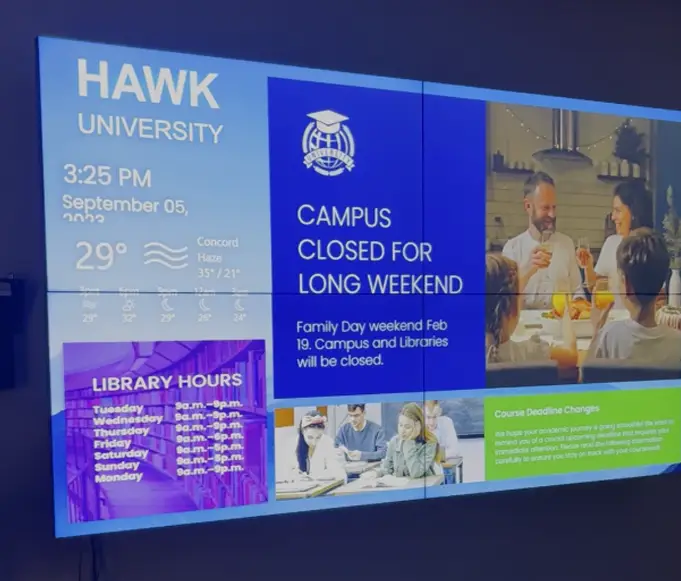What is Meant by Digital Signage?
Understanding the Basics, Definitions, and Types
The digital age has ushered in an era where the rapid dissemination of information is not just preferred but expected. Amid this transformation, digital signage has emerged as a pivotal player, redefining the engagement between businesses, public spaces, and their audiences. This piece explores the multifaceted world of digital signage, shedding light on its operational mechanics, diverse applications, and its profound impact on modern communication and marketing.
From Static to Dynamic: The Evolution of Signage
Gone are the days of static billboards and print ads that once dominated our visual landscapes. Today, digital signage stands at the forefront of this evolution, employing cutting-edge technologies like LCD, LED, projection, and e-paper displays. These aren't just screens; they are gateways to dynamic, interactive multimedia content that informs, advertises, and captivates.
How Digital Signage Powers Communication
At its heart, digital signage is driven by a blend of sophisticated hardware and software. The screens and media players constitute the hardware, bringing the visual aspect to life, while the software, particularly the content management system (CMS), serves as the brain of the operation. The CMS is where the magic happens, enabling the creation, management, and seamless distribution of content. It's this technology that allows for real-time content updates and tailoring messages to specific audiences, ensuring that the communication is always relevant and engaging.
The Varied Faces of Digital Signage
Digital signage takes on various forms, each serving distinct purposes and catering to different environments:
- Indoor Displays: These are the screens you encounter in malls, retail stores, and restaurants, enhancing the customer experience with timely promotions and entertaining content.
- Outdoor Signage: Designed to withstand the elements, outdoor digital signage captures the attention of passersby with vibrant ads and critical public information.
- Interactive Signage: By integrating touchscreens and other interactive technologies, this type of signage invites audience participation, transforming passive viewers into active participants.
- Digital Menu Boards: A staple in fast-casual dining, these boards offer an efficient way to present menus, specials, and nutritional facts, simplifying updates and changes.
- Wayfinding Kiosks: Navigating large complexes is made easier with these digital directories, providing visitors with interactive maps and information.
- Digital Posters: For advertising or informational purposes, digital posters offer a flexible and visually appealing solution across various settings.

The Unmatched Benefits of Digital Signage
Digital signage transcends traditional media with its ability to update content remotely, target specific demographic groups, and measure audience engagement through interactive elements. It not only enhances the viewer's experience by delivering timely and relevant content but also empowers businesses through improved communication, heightened brand visibility, and increased customer engagement and sales.
Looking Ahead: The Future of Digital Signage
As technology continues to evolve, so too does the scope and capability of digital signage. Its applications are expanding, making it an indispensable tool for contemporary marketing and communication strategies. Whether through an interactive kiosk, a towering digital billboard, or a subtle indoor display, digital signage is fundamentally changing the way we interact with information and each other. In this digital revolution, signage is not just seen; it is experienced, setting the stage for a future where digital and physical realms seamlessly converge.
Explore how digital signage can transform your business by visiting https://mediatile.com/industries/ for more detailed information tailored to your industry's unique needs and opportunities.

